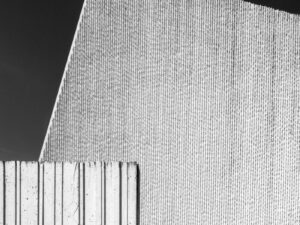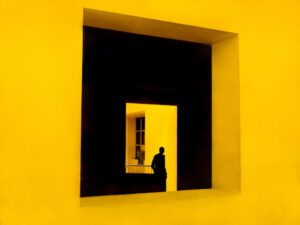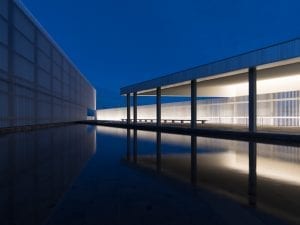“Our guiding principle was that design is neither an intellectual nor a material affair, but simply an integral part of the stuff of life, necessary for everyone in a civilised society.” So said German architect Walter Gropius (1883-1969), founder of Bauhaus, about the design school’s ideology. Material culture tells the story of humankind. Through objects, commodities and inventions, we can learn about the needs, aims and skills of different cultures and communities throughout history. Here is a list of current exhibitions that show how design has shaped our everyday lives, whilst demonstrating radical solutions for the future.

Life Cycles: The Materials of Contemporary Design | MoMA, New York | Until 7 July
Life Cycles examines how design can be elegant and innovative, responsible and respectful, all at once. The exhibition shows us the fundamental role of the designer in translating environmental considerations into informed practice. Some of the objects on display demonstrate ingenious reuse and upcycling, transforming waste into entirely new materials. The Japanese creative firm Nendo is one such example, with their Cabbage Chair (2007). Elsewhere, visitors can explore decorative items co-created with the natural world, like Tomáš Gabzdil Libertíny’s Honeycomb Vase (2006), which was made in collaboration with hundreds of bees. The relationship between creative practitioners and materials is continuously changing and evolving, from intimate hand crafting to efficient injection moulding techniques and experimental 3D printing. MoMA’s show offers viable, sustainable materials and solutions to take forward.

Masterpieces of Furniture Design | M7, Qatar | Until 9 December
Under the umbrella of Qatar Museums, Masterpieces of Furniture Design brings one of the world’s most important collections of furniture to Doha. The exhibition charts the evolution of more than 200 years of creative practice through 52 iconic pieces from the Vitra Design Museum’s collection. Dating from the 18th century through today, the display features works from well-known names such as Alvar Aalto (1898-1976), Charles (1907-1978) and Ray Eames (1912-1988), Florence Knoll (1917-2019), Le Corbusier (1887-1965) and Marcel Breuer (1902-1981). M7 explores a number of styles and artistic concepts ranging from arts and crafts to Bauhaus, organic design to Pop Art, Scandinavian and Italian post-war modernism to more recent postmodernism and the radical impact of the information age.

Long Life, Low Energy: Designing for Circular Economy | Tate Liverpool + RIBA North | Until 14 January
This October, Tate Liverpool and the Royal Institute of British Architects (RIBA) formed a new partnership on the city’s waterfront. The museum moved into RIBA North’s Mann Island building whilst the Royal Albert Dock is temporarily closed for redevelopment. Together, the two organisations are working to deliver temporary exhibitions, family activities, public talks and other events focused on art, architecture and ecology. Long Life, Low Energy explores how “circular economy” principles are critical to minimising the environmental impact of building construction, maintenance and destruction – which currently accounts for around 40% of global carbon emissions. With 50,000 structures dismantled in the country each year and building projects generating 63% of all UK waste, this is an essential look at the history and culture of demolition. It reveals how architects and designers are innovating to reuse materials and repurpose existing architectural sites, and looking at ways new technology can help navigate the climate emergency.

Colour Rush! | Vitra Schaudepot, Weil am Rhein | Until 5 May
The Vitra Schaudepot is one of the most recent additions to Vitra’s Campus, joining its array of production buildings, museums and architectural icons. The venue was designed by Herzog & de Meuron and it is an open archive that exhibits Vitra’s constantly growing collection. Dutch designer Sabine Marcelis has re-organised the Schaudepot by sorting its roughly 400 exhibits according to their colour. The show presents the myriad hues that surround us and shows how different shades can provoke emotions, assist with orientation, indicate functions, and act as a marker for culture, politics or religion. It shows why colour remains such an important design choice, central to brand identity, interior spaces, fashion and public forums. Colour Rush! includes household names, including architect Le Corbusier (1887-1965), who devised a palette of carefully graded shades, and the designer Verner Panton (1926-1998) whose vivid and futuristic colours communicated the hippie vibe of the 1960s and 1970s.

Makerversity: Designing for The Real World | Somerset House, London, UK | Until 4 February
Makerversity is a Somerset House-based community of over 300 creatives that works at the intersection of design, engineering and digital practice. Their motto – “designing for the real world” – originates from the 1971 book of the same title by creative producer and educator Victor Papanek (1923-1998). This pioneering text shows how socially and ecologically responsible design can radically disrupt the status quo and make a real impact on the way we live. The exhibition marks the ten-year anniversary of the initiative and explores the possible fundamental social and environmental changes that could come from innovation. Somerset House’s show introduces prototypes and early test concepts such as Enayball – a tool that allows people in wheelchairs to independently create large-scale drawings. Audiences can also visit workshop environments and discover ingenious projects that started out in Makerversity, but have since gone global.
Words: Fruzsina Vida
Image credits:
1. nendo, Oki Sato. Cabbage Chair. 2007. The Museum of Modern Art, New York. © nendo, Oki Sato
2. Adhi Nugraha. Cow Dung Lamps. 2021. The Museum of Modern Art, New York. photo: Studio Periphery
3. Materpieces of Furniture Design at M7, Quatar Museums
4. RIBA North exterior © Peter Mullin
5. Installation view »Colour Rush! An Installation by Sabine Marcelis«, Vitra Schaudepot © Vitra Design Museum, photo: Mark Niedermann © VG Bild-Kunst, Bonn 2023
6. Amphico. Image courtesy of Amphico





